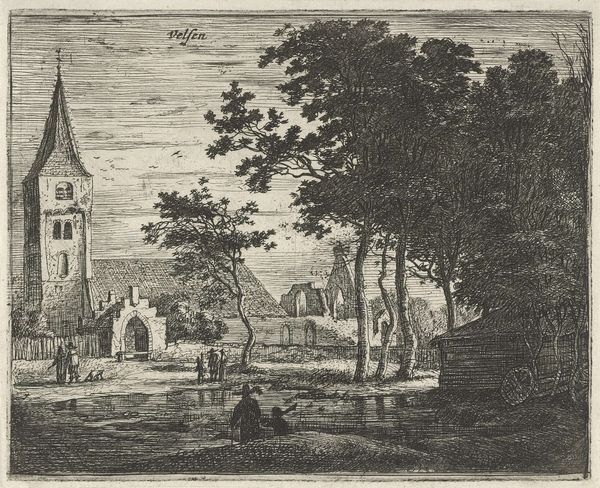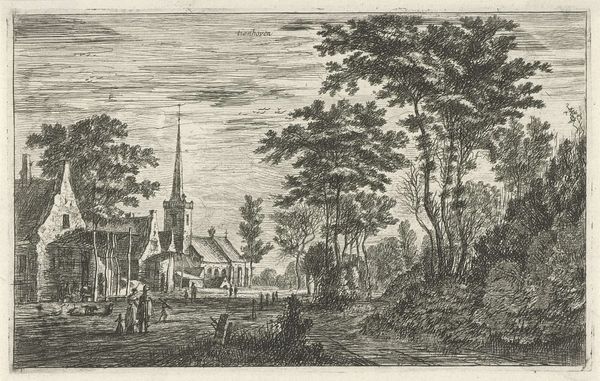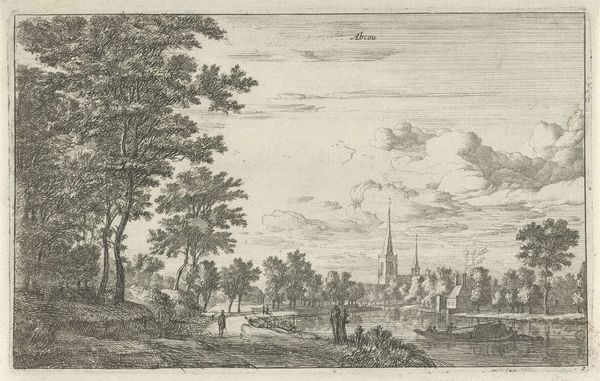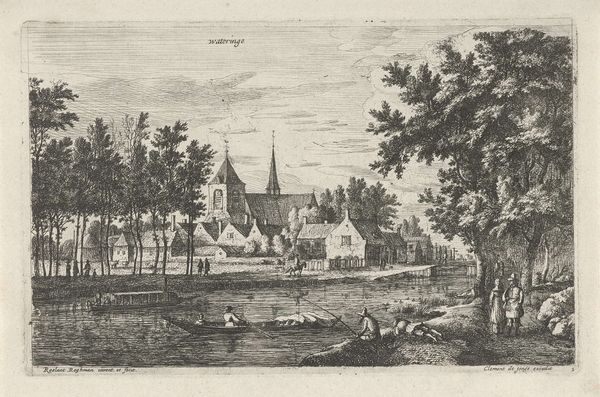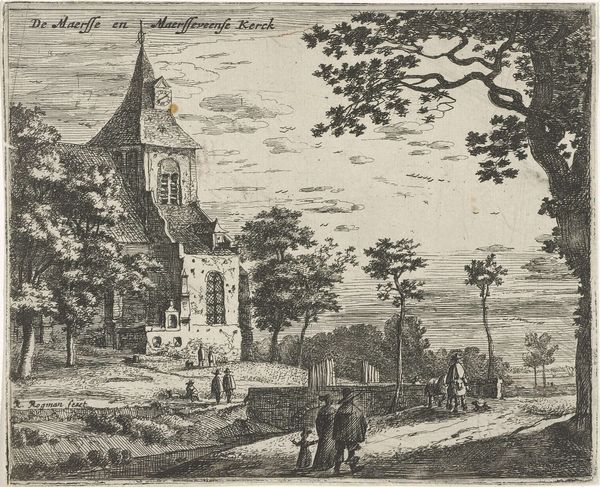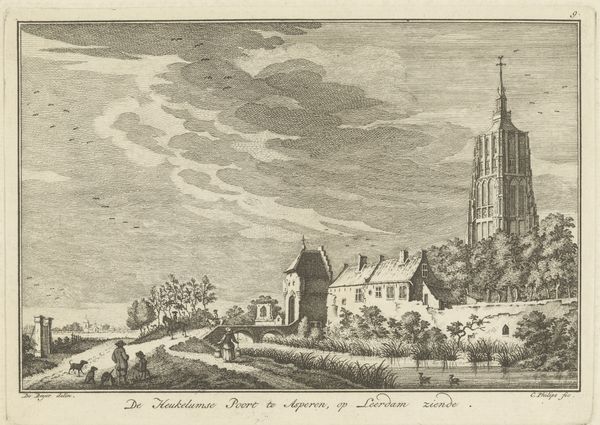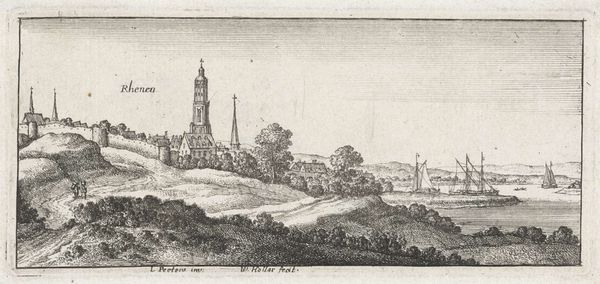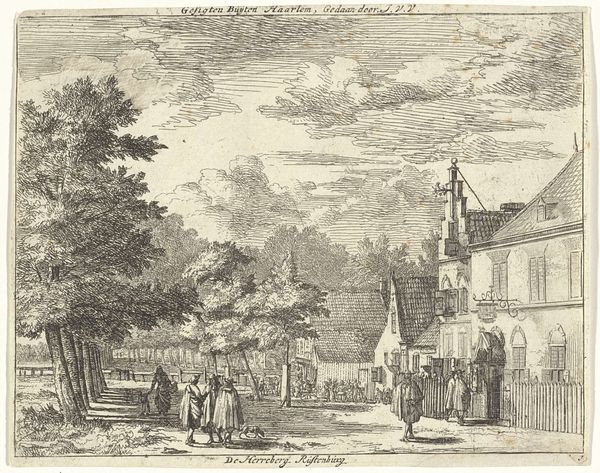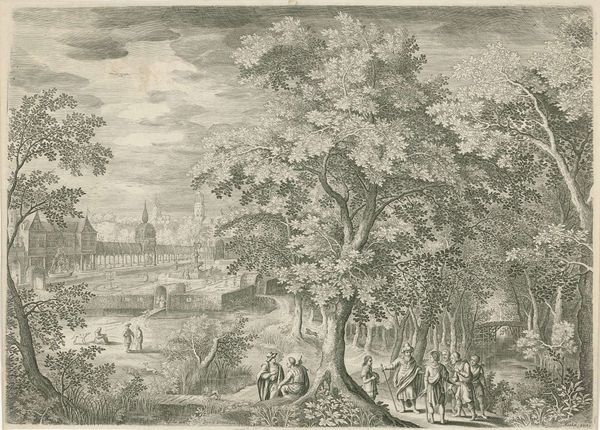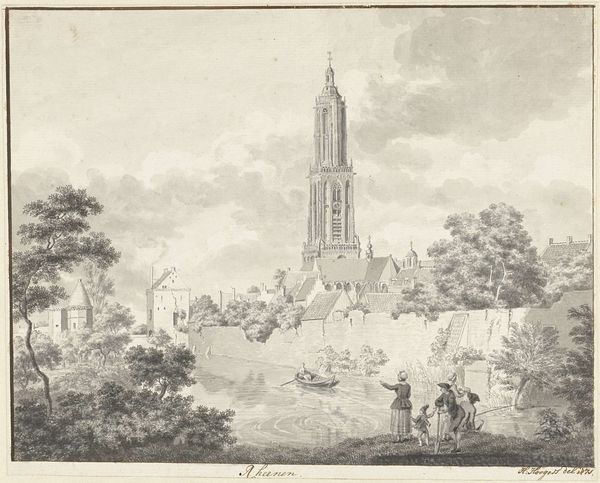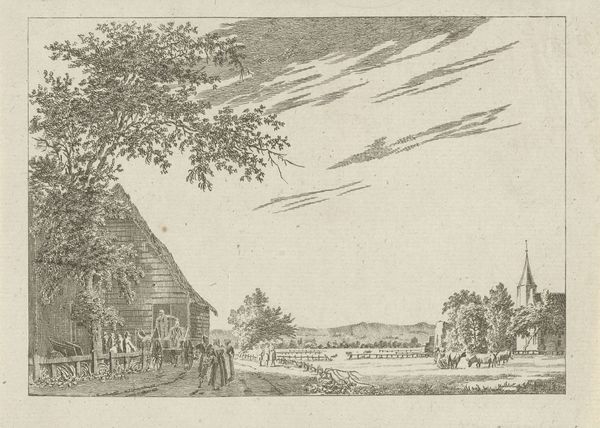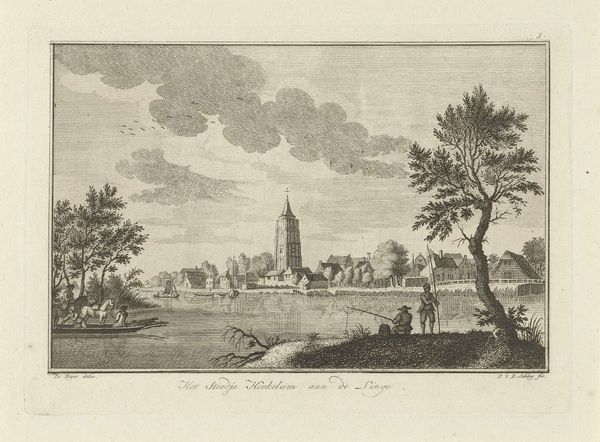
print, engraving
#
dutch-golden-age
# print
#
landscape
#
cityscape
#
engraving
Dimensions: height 133 mm, width 167 mm
Copyright: Rijks Museum: Open Domain
Curator: Welcome. We're standing before "Gezicht op Monster," a print by Roelant Roghman, dating back to the Dutch Golden Age, sometime between 1637 and 1677. The work resides here in the Rijksmuseum collection. Editor: It strikes me as profoundly tranquil, almost melancholic. The greyscale engraving seems to capture the slow pace of life in the Dutch countryside, perhaps deliberately romanticizing it. Curator: Absolutely. Notice the strategic arrangement of light and shadow—how Roghman uses the density of lines to create depth and direct our gaze toward the imposing church tower. The structural composition hinges on that central vertical element. Editor: And that church isn't just an architectural feature; it’s a powerful symbol of religious authority and the social hierarchy of the time. The landscape isn’t merely pastoral—it’s a space laden with class dynamics; look at the gentry on horseback compared to the figures on foot. Roghman is implicitly commenting on wealth distribution and societal roles. Curator: I appreciate your reading, but the precision of his technique also needs highlighting. Look at how he renders the texture of the trees and the subtle gradations in the sky, all through meticulously placed lines. It's a testament to his mastery of engraving as a medium, prioritizing compositional balance through form and shape, and visual relationships. Editor: While appreciating the craftsmanship, it's difficult to overlook how such idealized scenes often erase the realities of daily hardship. Consider the unseen labor underpinning this seemingly bucolic setting. This image functions as propaganda. It projects Dutch power and prosperity, particularly relevant considering the time and the recent end to The Eighty Years' War and Spanish rule. Curator: An insightful perspective, indeed. Roghman, intentionally or not, delivers visual formalism that reflects particular ideologies through subtle applications of light, line, form and the physical placement of these features within the visual frame. Editor: Ultimately, it shows that even ostensibly neutral landscape art serves very real cultural and political ends, consciously or otherwise. Curator: Indeed. Reflecting on it this way gives a sense of the dialogue embedded in landscape art between form, function, and historical context.
Comments
No comments
Be the first to comment and join the conversation on the ultimate creative platform.
